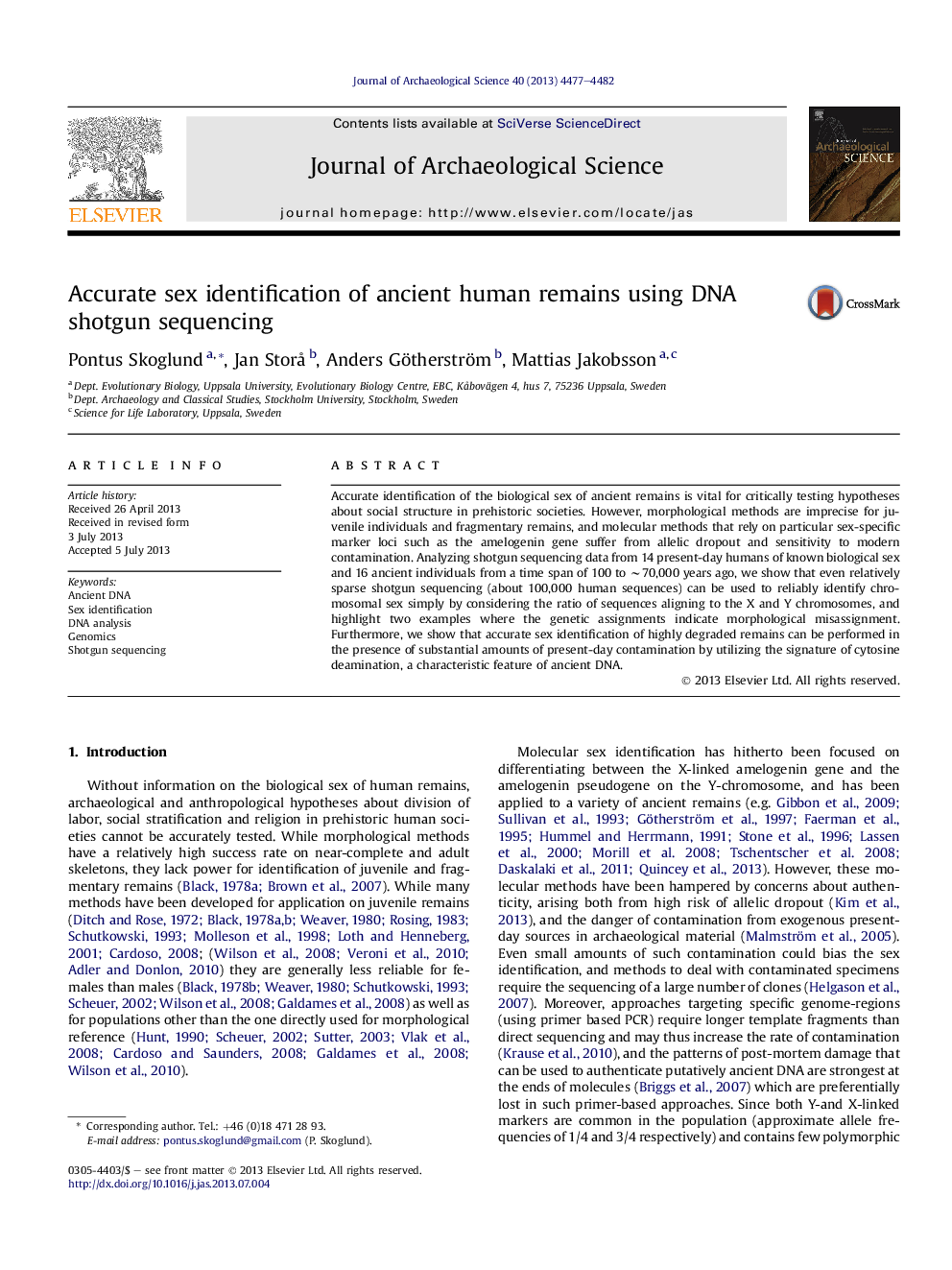| Article ID | Journal | Published Year | Pages | File Type |
|---|---|---|---|---|
| 7443993 | Journal of Archaeological Science | 2013 | 6 Pages |
Abstract
Accurate identification of the biological sex of ancient remains is vital for critically testing hypotheses about social structure in prehistoric societies. However, morphological methods are imprecise for juvenile individuals and fragmentary remains, and molecular methods that rely on particular sex-specific marker loci such as the amelogenin gene suffer from allelic dropout and sensitivity to modern contamination. Analyzing shotgun sequencing data from 14 present-day humans of known biological sex and 16 ancient individuals from a time span of 100 to â¼70,000 years ago, we show that even relatively sparse shotgun sequencing (about 100,000 human sequences) can be used to reliably identify chromosomal sex simply by considering the ratio of sequences aligning to the X and Y chromosomes, and highlight two examples where the genetic assignments indicate morphological misassignment. Furthermore, we show that accurate sex identification of highly degraded remains can be performed in the presence of substantial amounts of present-day contamination by utilizing the signature of cytosine deamination, a characteristic feature of ancient DNA.
Related Topics
Physical Sciences and Engineering
Materials Science
Materials Science (General)
Authors
Pontus Skoglund, Jan StorÃ¥, Anders Götherström, Mattias Jakobsson,
